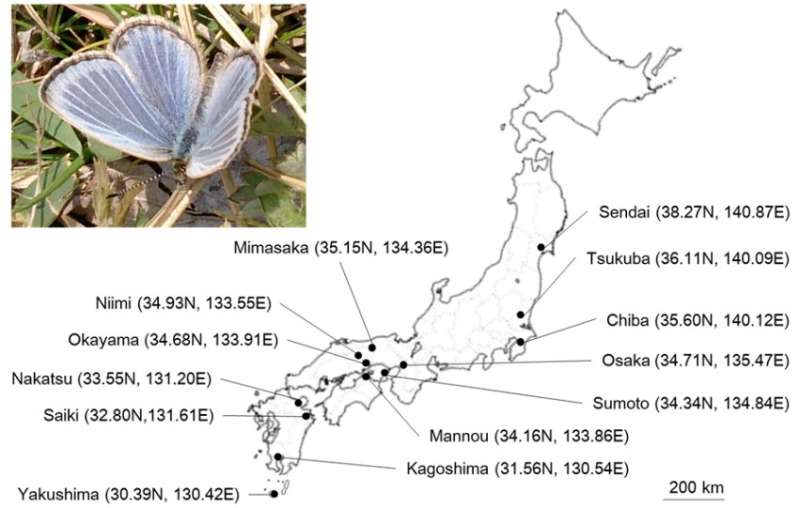Wolbachia bacterium density changes seasonally in butterflies

The survival rate of Wolbachia—a common bacterium—decreases under high temperature in incubators. However, few studies have examined the density of Wolbachia in hosts in the field.
Here, Takuto Sumi and colleagues at Okayama University focus on Wolbachia infection of the pale grass blue butterfly that is found throughout the Japanese archipelago.
The researchers examined the rate and density of Wolbachia infection in the bodies of butterflies at thirteen locations in Japan. At seven of these places, the scientists collected butterflies in different seasons to determine seasonal differences in the infection rate and density and found the Wolbachia density to exhibit seasonal differences within the same population.
Moreover, to determine whether Wolbachia density had a geographical cline, the team compared the infection density of Wolbachia amongst all geographical populations. In addition, they determined the sequences of Wolbachia wsp and host mtDNA CO1 haplotypes of all populations.
The results showed the Wolbachia density to increase in early summer and decrease in autumn.
Further, the density of Wolbachia infecting the same strain of Z. maha varied amongst populations, although no tendency in geographical cline was observed.
More information: Takuto Sumi et al. Wolbachia density changes seasonally amongst populations of the pale grass blue butterfly, Zizeeria maha (Lepidoptera: Lycaenidae), PLOS ONE (2017). DOI: 10.1371/journal.pone.0175373
Journal information: PLoS ONE
Provided by Okayama University



















